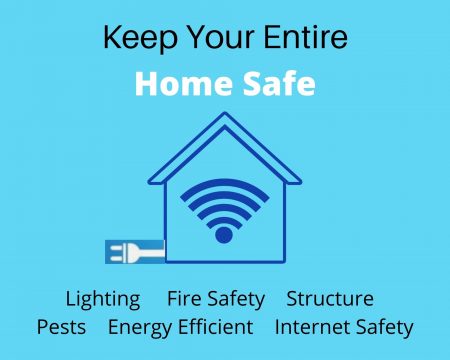saf Keeping your home in Kingwood comfortable, safe, and protected is a must for peace of mind and securing your investment, as well as your home. When keeping your home protected, you should think about both security and the ways in which the property itself can be protected against damage or any other problems.
Keeping your home in Kingwood comfortable, safe, and protected is a must for peace of mind and securing your investment, as well as your home. When keeping your home protected, you should think about both security and the ways in which the property itself can be protected against damage or any other problems.
Here’s a guide to keeping your home safe.
- Secure Your Main Features
When it comes to windows and doors, security is key. Not only that, but the more you can invest in durable windows and doors, the more your home will be kept warmer and more energy-efficient, too; so there are benefits beyond security.
If you have a large property, make sure all potential entrances are secured with locking features, including garage doors, side doors, and main gates or fences if needed.
- Keep it Well Lit
A well-lit home is a secure one—allowing you to move safely around your property and also so you can deter any unwanted attention. Dark homes that appear empty may be attractive to thieves, so make sure to also leave a light or two on if you’re going out during the evening.
It’s a good idea to have a motion-sensitive security light at your main entrance and in your garden, in order to detect anyone moving about.
- Check for Pests
Keeping your Kingwood home safe includes protecting it against any pests and infestations, and especially those that can cause damage to your property by chewing and causing wood damage. Checking for pests, especially termites should be part of your regular maintenance routine, and you can watch out for signs of pests by looking for droppings, activity, noises, and damage in the walls, especially in places such as the loft. Don’t hesitate to seek professional pest control from Gulf Coast Exterminators when needed; Gulf Coast Exterminators has provided affordable and highly effective pest control in Kingwood Texas for over 20 years.
- Be Aware of Fire and Electrical Safety
Be mindful when you’re using the kitchen and any other electronics. Switch off any plug sockets you aren’t using, or when you’re leaving the house—and be cautious with double-checking kitchen items such as the stove or oven so that they’re securely switched off. In addition, make sure all your fire alarms are in good working order at all times.
- Focus on Internet Security
You want to enjoy safe browsing within your home without having to worry about a lack of security. Make sure to use a secure WiFi network with strong passwords so that your household internet connection remains protected in your Kingwood neighborhood.
Also get into the habit of safe browsing practices within your home, especially if you have many family members and younger children, to make sure that everyone is kept safe online.
In Conclusion
When considering a safe home in Kingwood, think about how to keep both you and your property protected. How can you make sure you have a home which is structurally sound and healthy to live in, whilst also making sure you have the best security measures to keep you protected? These tips will help.
[…]
Related:
3 Reasons To Invest In Home Automation Technology
